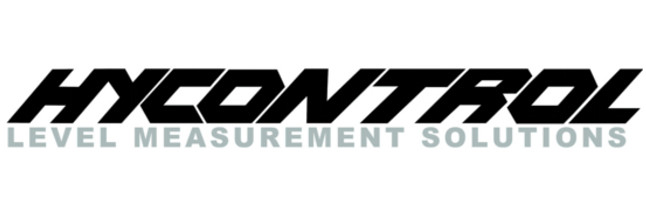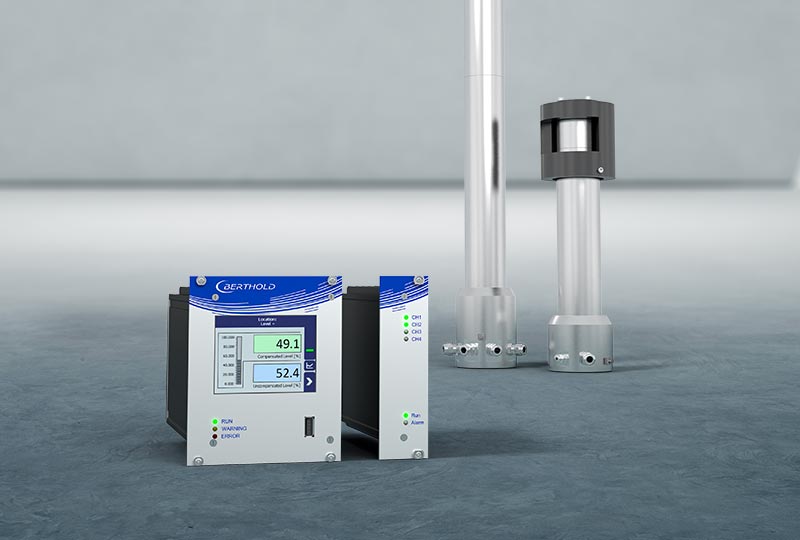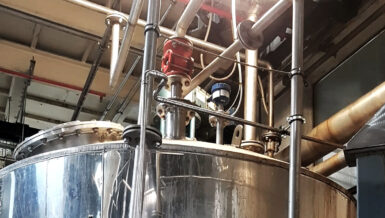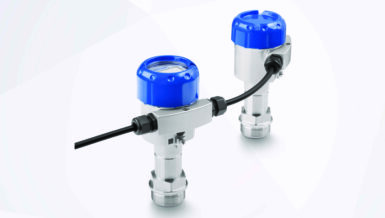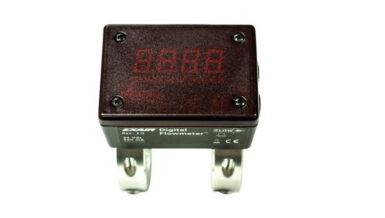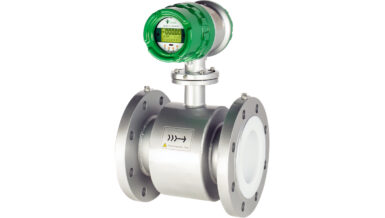Introduction
The patented measurement technique developed by Hycontrol uses level measuring technology specifically developed for measuring foam levels and foam-liquid interfaces. Suitable for both aqueous and non-aqueous liquids, this technology already has a proven track record in a wide range of applications and industries. By comparison, alternative, less effective solutions use existing level measuring technology that has been ‘adapted’ to measure foam. These tend to be inherently unreliable, inaccurate and adversely affected by process product build-up on the measuring probes.
“Measurement is the first step that leads to control and eventually to improvement. If you can’t measure something, you can’t understand it. If you can’t understand it, you can’t control it. If you can’t control it, you can’t improve it.”
– H. James Harrington, 1929
Harrington’s principle is certainly true of the challenges presented by industrial foaming and its subsequent control, as we shall see.
Foaming affects almost every industrial sector: from pharmaceuticals to brewing, from paint manufacture to waste water treatment, from oil & gas to food processing, from textiles to pulp and paper. Foam may be an integral and important part of a process or it may be an unwanted side effect.
Foaming has the appearance of a simple material, partly because we are all familiar with it whether, for example, in the form of bath foam, bubbles in a milkshake or the head on a glass of beer. However in practice foam is a very complex, dynamic material with its production involving physical, chemical and biological processes.
Most of the common foams are an unstable, two-phase medium of gas and liquid with a particular structure consisting of gas pockets trapped in a network of thin liquid films and plateau borders. Several conditions are needed to produce foam: there must be aeration (generated for example by mechanical agitation, mixing, stirring and sparging) and surface active components (surfactants) that reduce the surface tension. There is always a natural drainage along the thin films of liquid between the bubbles. Liquid gradually drains out from top to bottom, creating a density gradient through the column of foam. The foam at the top of the column collapses as the films become too thin to support the bubbles. Equilibrium develops between this material collapse at the top and the build-up of new foam from the liquid surface below.
This ongoing process limits the maximum height of the foam column. However, in some processes foam stabilising agents such as proteins reduce the drainage, resulting in much more stable foam. In these circumstances, the foam production rate can far exceed the dispersal rate and the foam can build up to a serious level. Proteins as long chain molecules have this effect by lying along the thin films between the bubbles, there by preventing drainage. The stability of such foams clearly has a large impact on their lifetime.
Additional factors such as poor system design and leaking pumps can exacerbate foaming problems. In all instances, in order to minimise the impact of foam, it requires to be effectively monitored, measured and controlled.
Controlling foam
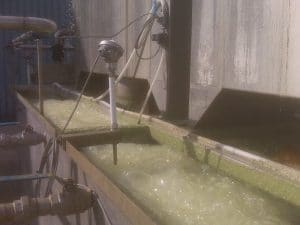
There is an extremely diverse set of chemical formulations that can be effective either to prevent foam forming or to destroy it once it has formed. In practice most foam-dispersing chemicals can serve either role. Each anti-foam or de-foamer agent is specifically developed for individual applications and the world-wide market for these essential evils is worth billions of pounds per annum. Commonly used agents are insoluble oils, polydimethylsiloxanes and other silicones, certain alcohols, stearates and glycols.
The most universal characteristic of any de-foamer is the fact that it is surface active. Most are insoluble, however some are water-soluble which only adds to the complexity. The latter type has a property known as inverse solubility. An increase in the temperature of an aqueous system in which the de-foamer is present causes a decrease in its solubility. At or above the cloud point (the initial effective temperature), the de-foamer separates from solution and acts as an extremely effective de-foamer. Reduction of the system temperature below the cloud point enables the de-foamer to become solubilised again.
Insoluble de-foamers have to be formulated so that they will be dispersed as tiny droplets, i.e. as an emulsion. The surface-active nature of the material causes it to spread very rapidly onto any air-liquid interface that it encounters. This is especially the case if that interface is already covered by the types of surface-active materials that tend to stabilise foams.
Anti-foamers and de-foamers operate by being absorbed into bubble surfaces in preference to the foam stabilising agent. They are then effective in increasing the drainage rate so that the bubbles drain quickly and then collapse. An effective de-foamer can disperse foam in a few seconds and the process can be dramatic to watch.
Adding up the costs
Foam generation can cause a variety of expensive and time-consuming problems. These include environmental pollution, potential product contamination, loss of product through excessive foaming, downtime and clean-up costs if foams spill over from the process. Excess foam can severely limit product throughput in a process and can result in damage to equipment including pumps, filters and valves. Add into this the ongoing cost of de-foamers and it is clear how important it is to implement effective foam control.
The key problem is being able to understand the characteristics of the foam and then measure its thickness and, in some applications, where the foam-liquid interface resides. The foam can be controlled through the addition of de-foamers, but without the above key information their addition is typically done on an empirical basis, often based on historical experience. This can then result in a cyclic or sine wave solution to the problem. De-foamers are added in quantities based on maximum demand and the foam subsides. It then develops again above acceptable levels and more de-foamer is added. This staccato, reactive (rather than proactive) approach is expensive and wasteful. In many cases, when the foam disappears and the problem subsides, the rate of de-foamer addition is not reduced, resulting in excess chemical usage, which can have substantial cost implications.
Measuring problems
The effective and reliable measurement of foam thicknesses and foam-liquid interfaces presents a number of challenges. Results can be adversely affected by a range of factors including constantly varying foam density and gradual coating or fouling of the measurement probes with residual product from the process chemicals.
Traditional measurement techniques have been based on a range of existing level probe technologies adapted for foam measurement. In most applications, these fall short of providing an adequate and sustainable solution.
The Solution
A highly versatile range of Foam Control systems have been specifically developed to fulfil a variety of functions, for example measuring the thickness of foam in a process; detecting foam-liquid interfaces; or measuring liquid levels whilst ignoring the presence of any foam. Hycontrol point out that the technology behind these systems originated from detailed research into foam control during pharmaceutical fermentation and that the special measuring sensors and control equipment have been designed specifically for foam control and are not modified level sensors. This is a tool that has been specifically created for this task alone.
Industry specific foam problems
Uncontrolled foam generation can affect productivity in a wide range of industries. It causes particular problems in the waste water, pharmaceutical, and food & beverage sectors. The foam control systems developed by Hycontrol are proving to be very effective in these industries, bringing significant cost savings and productivity improvements. By monitoring and measuring foam production, real time data can be used to ensure de-foamers are only added in controlled quantities when required.
Food and Beverage
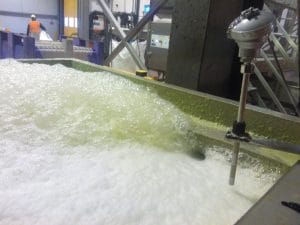
In the food-processing and beverage industries, foam can be generated at various points in a production process. This is caused predominantly by the presence of surface-active substances such as proteins, fatty acids and sugars. Foam is a particular problem in alcohol distillation and in the production of deep-frozen foods, deep-frying oils and gelatine, as well as in fruit conservation and vegetable washing. Invariably, the resulting foam impairs product properties in many different ways and greatly disrupts the process flow. Foam spillages are disruptive and time-consuming to clean up and dispose of. Silicone-based antifoam agents are the most common chemicals used to manage foam but product contamination is a major consideration.
Waste water
Bulking sludge and foam are two undesirable, complicated and unpredictable challenges for many waste water treatment plants (WWTP). In many cases, the filaments causing bulking sludge tend to float and thereby produce huge amounts of foam. The foam may vary in depth considerably and extend throughout the biological circuit, as well as to anaerobic digesters and dewatering units.
The traditional approach is to dose anti-foam into the process on a continual basis. This dose rate is typically set to cope with foam during the plant’s peak demand. However on average this is far too high and in some systems there is little or no foam generation for most of the time. Alternatively the addition of chemicals is often done randomly, in far too large quantities and too late. This reactive approach results in very limited control and shows little understanding of the entire process. In some cases, a WWTP can suffer for years without finding a sustainable solution to the problem. The chemicals used may themselves also add to the foaming problem. In both cases, the excessive cost of chemicals and energy through unnecessary pumping can be substantial. Additional costs are also incurred through unnecessary equipment wear and damage.
Pharmaceutical
Accurate foam control is essential in the Pharmaceutical industry, especially during the fermentation process, which is used in the production of antibiotics, vaccines, steroids and other drugs.
These products are frequently created by biotech processes which use natural organisms such as bacteria, algae or animal cells to produce the end product. Probably the best-known process of this kind is brewing in which yeast is used to create alcohol. Natural organisms require a healthy environment for growth and optimum yields. Products such as vaccines require very high-tech fermenters for efficient production. These usually involve stirring and air or gas mixing to operate. However natural organisms also tend to create unwanted proteins as a by-product and these act as foam stabilizers, creating the perfect environment for stable foam production on top of the broth.
Stories of so-called ‘foam-overs’ abound in the pharmaceutical industry by which whole processes and equipment can be destroyed. A ruined batch can often represent hundreds of thousands of pounds in lost product before taking into account the costs of any equipment damage or clean-up costs. There is also the possibility that the liquid could be completely turned into foam if not controlled quickly enough.
Typically antifoams are used to control the foam build up in fermenters but these are difficult to control and can have some unwanted side effects. Firstly, by reducing surface tension the gas bubble size increases, reducing the mass gas transfer into the broth. This can seriously limit the yield of the process. Secondly, the excess use of some anti-foamers can contaminate to the end product and be very difficult to remove.
Conclusion
Companies world-wide spend billions of pounds each year dealing with foam and the effects it has on their businesses. Consideration must also be given to the long-term detrimental effect that the disposal and dispersal of de-foaming chemicals has on our health and the environment. There is clear evidence that considerable savings can be made by actively controlling the addition of antifoaming chemicals and the technology is now available to achieve this. There is no need for companies to continue with out-dated control systems, which ultimately only serve the interests of the chemical suppliers.



